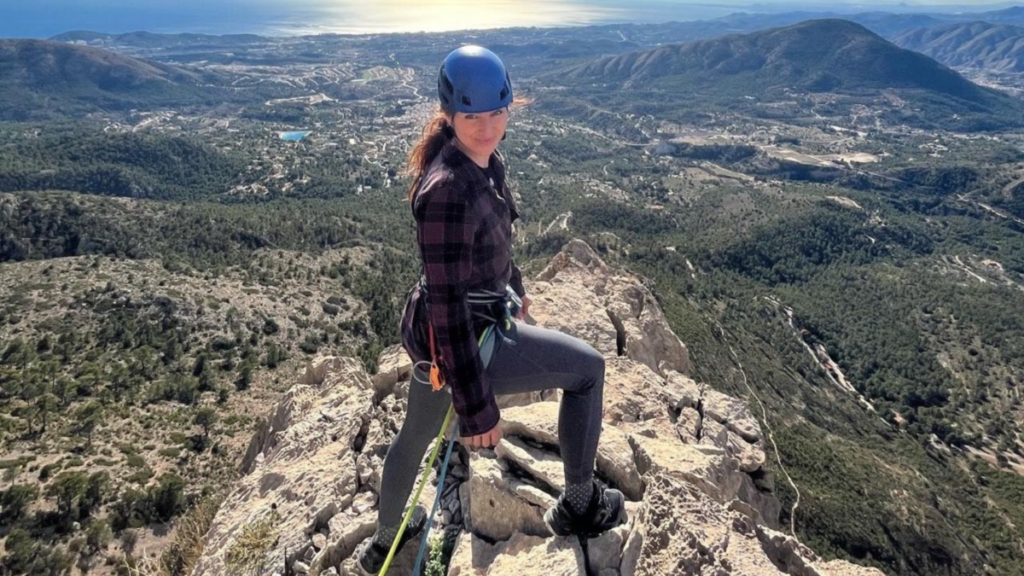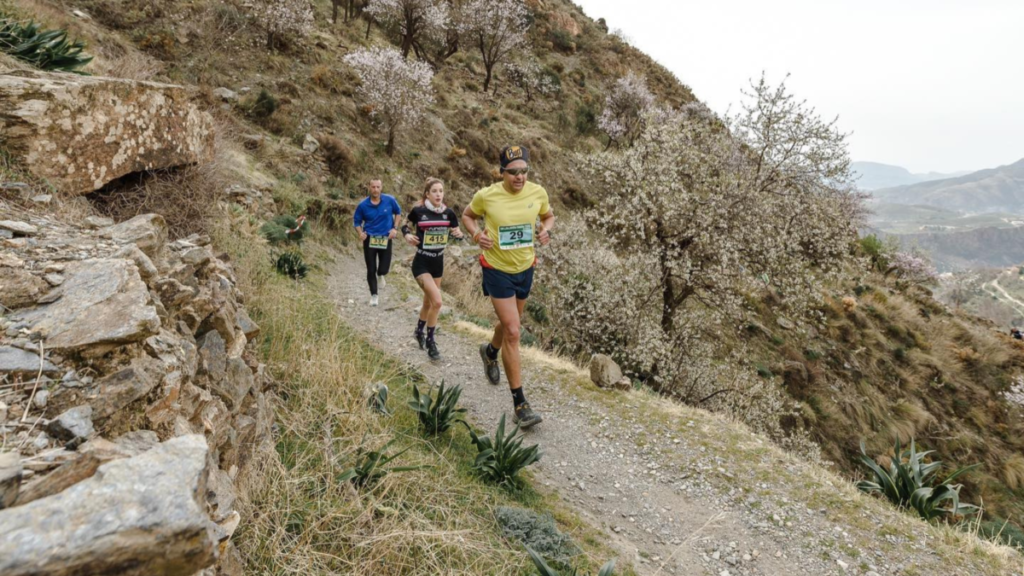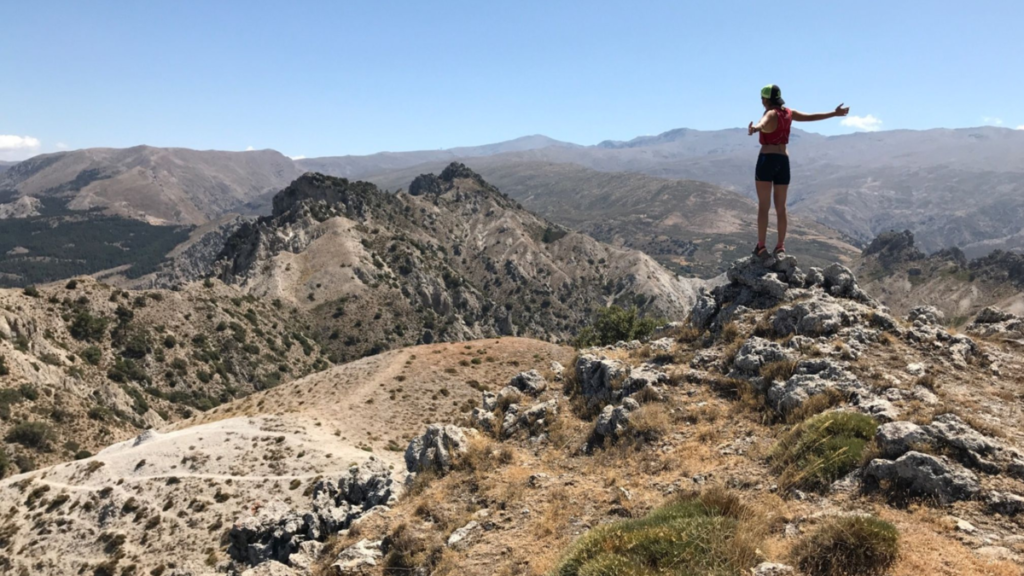
My introduction to the world of trail running was thanks to my high school cross-country coach who used to run with us on the local mountain trails for our weekly long run. He would repeatedly tell us how much better it was for our posture to do our long runs on the varied and unpredictable surfaces of mountain trails.
The uneven and varied terrain of the trails we run on engages different muscle groups, promoting postural strength and stability. Unlike running on flat surfaces like pavement or treadmills, trail running requires constant adjustments to navigate obstacles, which enhances balance and coordination.
Let’s take a closer look at all of the ways that trail running improves our posture compared to running on smooth, flat surfaces.
Can Trail Running Improve Posture
Trail running offers unique benefits for improving posture compared to traditional running surfaces. The uneven terrain and varied elevation encountered while trail running engage different muscle groups, promoting overall postural strength and stability. Unlike the repetitive motion of running on flat surfaces like pavement or treadmills, trail running requires constant adjustments to navigate obstacles, which can enhance balance and coordination.

The dynamic nature of trail running challenges the body to adapt to changing conditions, leading to improved posture awareness and muscle engagement. As runners navigate uphill climbs, downhill descents, and uneven paths, they activate core muscles to maintain stability and alignment. This continuous engagement of the core muscles during trail running not only enhances strength but also promotes better posture by supporting the spine and reducing the risk of postural imbalances.
By incorporating trail running into a fitness routine, individuals can strengthen supportive muscles, improve spinal alignment, and enhance flexibility and range of motion. These benefits contribute to overall posture improvement and can help correct postural imbalances caused by prolonged sitting or poor posture habits. Trail running serves as a holistic approach to enhancing posture, emphasizing the importance of core strength, balance, and stability in achieving optimal postural alignment.
The Role of Core Strength
Engaging the core muscles during trail running is essential for maintaining stability and alignment. The uneven terrain and varied elevation encountered while trail running require constant activation of the core to navigate obstacles effectively. This continuous engagement not only strengthens the core muscles but also plays a crucial role in supporting the spine and reducing the risk of postural imbalances.
Trail running challenges the body to adapt to changing conditions, leading to improved posture awareness and muscle engagement. As runners tackle uphill climbs, downhill descents, and uneven paths, the core muscles are activated to stabilize the body and maintain proper alignment. This dynamic engagement of the core during trail running promotes better posture by enhancing overall strength and stability.
By emphasizing core strength in trail running, individuals can develop a strong foundation that supports optimal postural alignment. The connection between engaging the core muscles during trail running and achieving better posture highlights the importance of incorporating this activity into a fitness routine for holistic posture improvement.
Balance and Stability Challenges
Navigating uneven terrain during trail running presents significant balance and stability challenges. The constant adjustments required to traverse rocky paths, tree roots, and steep inclines demand heightened proprioception and coordination. As runners engage various stabilizing muscles to maintain equilibrium on unpredictable surfaces, they gradually enhance their balance and stability skills. This continuous refinement of balance not only reduces the risk of falls and injuries but also contributes to improved posture over time.
The dynamic nature of trail running forces the body to adapt quickly to changes in terrain, promoting a more robust musculoskeletal system. By regularly exposing the body to these balance and stability challenges, trail runners develop a stronger core, leg muscles, and stabilizers throughout the body. These strengthened muscle groups work synergistically to support proper alignment and posture, leading to long-term postural improvements. Ultimately, the enhanced balance and stability skills acquired through trail running translate into a more upright and aligned posture, benefiting overall musculoskeletal health.
Engaging Different Muscle Groups
Trail running engages a wider range of muscles compared to road running due to the varied terrain and obstacles encountered. The uneven surfaces and elevation changes of trails require the activation of not only the major muscle groups but also smaller stabilizing muscles throughout the body. Muscles in the core, legs, hips, and feet are constantly recruited to navigate the challenging terrain, leading to a more comprehensive muscle engagement.
This holistic approach to muscle activation during trail running plays a crucial role in improving overall posture. By strengthening a diverse set of muscles, trail runners develop better support for the spine and joints, promoting proper alignment and reducing the risk of postural imbalances. Engaging different muscle groups also helps distribute the workload more evenly, preventing overuse injuries and enhancing overall stability.
The dynamic nature of trail running forces the body to adapt and respond to the ever-changing environment, resulting in a more balanced and aligned posture over time. By incorporating a variety of muscle groups into each run, trail runners not only enhance their physical performance but also contribute to long-term postural improvements.
Posture Awareness During Trail Running
Maintaining proper posture while trail running is essential for long-term posture improvement. One technique is to focus on keeping your head up and looking ahead to prevent slouching and promote a straight back. Additionally, engaging the core muscles by pulling the belly button towards the spine can help support the spine and maintain alignment.

Conscious posture awareness during trail running sessions involves regularly checking in with your body to ensure proper alignment. This can be done by periodically adjusting your posture, such as rolling your shoulders back and down to open up the chest and prevent rounding of the shoulders.
By practicing good posture habits during trail running, such as maintaining a neutral spine and avoiding excessive leaning forward or backward, you can strengthen the supportive muscles that contribute to overall posture improvement. Developing a heightened awareness of your posture while running trails not only reduces the risk of postural imbalances but also enhances your running efficiency and performance.
Correcting Postural Imbalances
Trail running offers a dynamic environment that can effectively address postural imbalances by engaging different muscle groups and challenging the body’s stability. The varied terrain forces the body to adapt to uneven surfaces, which helps strengthen muscles that may be underdeveloped or neglected in traditional running or workout routines.
As trail runners navigate uphill climbs, downhill descents, and uneven paths, they are required to adjust their body positioning constantly. This continuous adjustment promotes balance and stability, targeting areas of weakness and asymmetry in the body. By regularly exposing the body to these challenges, trail running can help correct postural imbalances by encouraging the development of a more balanced musculature.
Furthermore, the need to maintain proper posture while navigating technical trails enhances postural awareness and encourages runners to focus on alignment and core engagement. This heightened focus on form and stability during trail running sessions can translate into improved posture habits in daily activities, ultimately contributing to the correction of postural imbalances over time.
Impact of Trail Running on Spinal Alignment
Trail running has a significant impact on spinal alignment due to the nature of the varied terrain it encompasses. The uneven surfaces and constant adjustments required during trail running sessions play a crucial role in promoting spinal health and alignment. As runners navigate through uphill climbs, downhill descents, and rocky paths, their bodies are constantly adapting to the changing environment, which in turn engages and strengthens the muscles supporting the spine.

The dynamic movements and challenges presented by trail running help to improve core strength and stability, essential components for maintaining proper spinal alignment. By continuously adjusting body positioning to navigate obstacles and maintain balance, trail runners develop a more robust musculature around the spine, reducing the risk of misalignments and injuries.
Moreover, the emphasis on posture awareness during trail running sessions encourages runners to focus on maintaining a neutral spine and engaging their core muscles. This heightened awareness translates into better posture habits in daily activities, further supporting spinal alignment and overall back health. Through consistent trail running, individuals can experience improved spinal alignment, reduced back pain, and enhanced posture for better long-term musculoskeletal health.
Strengthening Supportive Muscles
Trail running not only targets the major muscle groups but also plays a crucial role in strengthening the supportive muscles around the spine. The dynamic nature of trail running, with its constant adjustments to navigate uneven terrain, engages muscles that are often neglected in traditional running on flat surfaces. Muscles such as the erector spinae, obliques, and deep core stabilizers are actively involved in maintaining balance and stability during trail running, leading to their strengthening over time.
By specifically targeting these supportive muscles, trail running helps to reinforce the entire musculature around the spine. This reinforcement is essential for better posture in daily activities as these muscles play a key role in supporting the spine and maintaining proper alignment. As these muscles become stronger and more resilient through trail running, individuals are better equipped to maintain good posture throughout the day, reducing the risk of slouching or other postural imbalances.
Overall, the strengthening of supportive muscles through trail running not only enhances performance on the trails but also translates into improved posture and spinal alignment in everyday life, promoting long-term musculoskeletal health.
Flexibility and Range of Motion Benefits
Flexibility and range of motion are crucial components of maintaining good posture, and trail running can significantly impact both. Trail running involves navigating various terrains, which requires the body to adapt and move in different ways. This constant variation in movement patterns helps to enhance flexibility in muscles and joints, leading to an increased range of motion.

By engaging in trail running regularly, individuals can experience improvements in their flexibility, allowing for a greater range of motion in key areas such as the hips, shoulders, and spine. Enhanced flexibility enables the body to move more freely and efficiently, reducing the likelihood of stiffness or restricted movement that can contribute to poor posture.
Moreover, increased range of motion supports proper alignment of the spine and joints during daily activities. When the body can move through its full range of motion without restrictions, it promotes better posture by reducing the strain on muscles and ligaments. This improved alignment not only enhances performance during trail running but also carries over to everyday movements, supporting overall musculoskeletal health and posture.
Post-Run Recovery and Stretching
Post-run recovery and stretching play a vital role in maintaining good posture for trail runners. After a challenging trail run, it is crucial to prioritize recovery to prevent muscle tightness and imbalances that can affect posture. Incorporating stretching exercises helps to release tension in muscles, improve flexibility, and promote proper alignment of the body.
One beneficial stretch for trail runners is the hip flexor stretch, which targets the muscles in the front of the hips that can become tight from running. This stretch helps to counteract the effects of prolonged sitting and running on uneven terrain. Additionally, focusing on stretches for the hamstrings, calves, and quadriceps can help prevent muscle imbalances that may lead to poor posture.
In terms of recovery techniques, foam rolling is a popular method to alleviate muscle soreness and tightness post-run. It helps to increase blood flow to the muscles, promoting faster recovery and reducing the risk of injury. Incorporating gentle yoga poses or using tools like massage balls can also aid in releasing tension and maintaining muscle health for better posture. By prioritizing post-run recovery and incorporating targeted stretching exercises, trail runners can support their posture and overall musculoskeletal health.
Incorporating Cross-Training for Overall Posture Improvement
Cross-training plays a crucial role in enhancing posture alongside trail running by targeting different muscle groups and promoting overall body strength and alignment. Activities such as yoga, Pilates, or strength training can complement trail running by focusing on core stability, flexibility, and muscle balance.
Yoga, for example, emphasizes flexibility and body awareness, helping trail runners improve their posture by elongating muscles, releasing tension, and promoting proper alignment. Pilates, on the other hand, focuses on core strength and stability, which are essential for maintaining good posture during trail running and everyday activities. Strength training exercises, like squats and lunges, can help strengthen supportive muscles, such as the glutes and back muscles, contributing to better posture and spinal alignment.
By incorporating cross-training activities into their routine, trail runners can address specific muscle imbalances, enhance overall body awareness, and prevent injuries that may result from poor posture. These complementary activities not only improve physical performance but also contribute to long-term postural health and well-being.
Monitoring Progress and Adapting Training Regimens
To monitor posture improvement progress while trail running, individuals can start by keeping a training journal to track their running distances, times, and any changes in posture awareness. Regularly assessing posture during runs can help identify areas of improvement or potential imbalances. Additionally, incorporating strength and flexibility assessments into their routine can provide valuable insights into muscle weaknesses or tightness that may impact posture.
Adapting training regimens to optimize posture benefits involves gradually increasing running intensity and distance to challenge the body and promote muscle strength and endurance. Introducing interval training sessions can help improve cardiovascular fitness and overall running performance, which indirectly contributes to better posture maintenance. Moreover, integrating specific exercises targeting core strength, balance, and flexibility can further enhance posture alignment and stability during trail running.
By monitoring progress through journaling, posture assessments, and incorporating varied training techniques, individuals can tailor their regimens to address specific posture needs and continuously improve their overall posture alignment and muscle balance over time.
